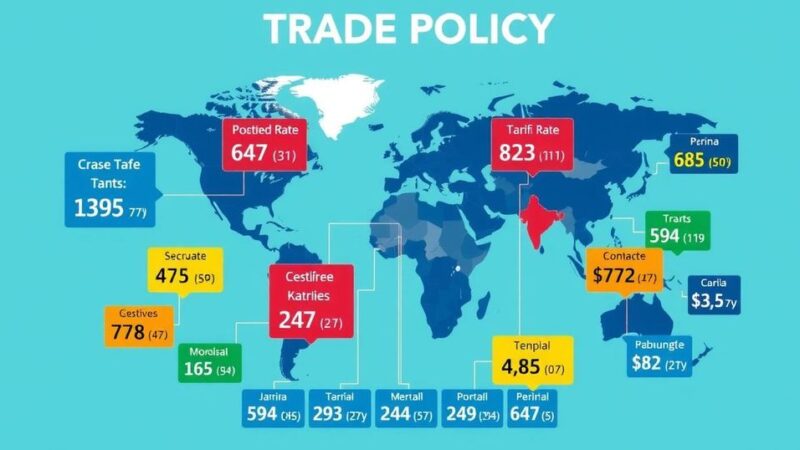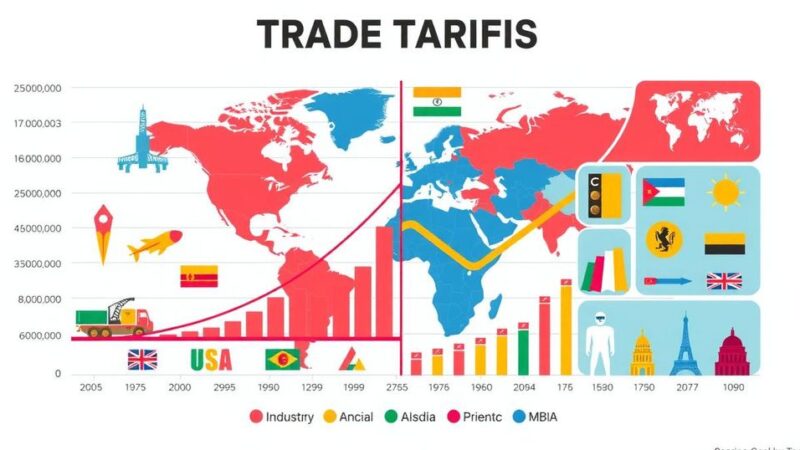Global stock markets rose as investors reacted positively to China’s stimulus plans aimed at boosting consumption and countering economic weaknesses. Relief over US government shutdown avoidance also contributed to market optimism, although caution remains due to potential inflation and stagflation risks amidst ongoing trade tensions with the US.
Global stock markets opened positively this week, buoyed by China’s announcement aimed at boosting consumption to revive its economic growth post-COVID-19. This sentiment was further supported by expectations surrounding decisions on interest rates from central banks. The avoidance of a US government shutdown also added to a sense of relief, countering the impact of disappointing economic indicators in the United States.
Investors are particularly attentive to Beijing’s plans to stimulate consumer spending, which has lagged due to the consequences of the pandemic. Initiatives include reforms in the property sector, measures to stabilize the stock market, and incentives for lenders to offer consumption loans under favorable conditions. Susannah Streeter, head of money and markets at Hargreaves Lansdown, remarked on the cautious optimism surrounding these measures by stating, “Hopes that a new consumer life raft in China will buoy up the country’s prospects of recovery have helped lift sentiment slightly.”
Additionally, officials are considering increasing pension benefits, creating a childcare subsidy system, and legally safeguarding workers’ rights to rest days and holidays. This development follows concerning economic data indicating that consumer prices fell into deflation for the first time in a year, with producer prices also declining. Economists from Moody’s Analytics expressed apprehension about the challenges Chinese leaders face amidst ongoing trade tensions with the United States, particularly under President Donald Trump’s administration.
Asian markets experienced gains, with Hong Kong continuing its strong performance driven by investments in Chinese technology firms. Major European indices in London, Paris, and Frankfurt followed suit, reflecting supportive trends from Asia. Wall Street indicated a mixed response, with the S&P 500 marginally higher despite disappointing retail sales figures.
The financial community is simultaneously concerned about higher production costs that could contribute to stagflation—a combination of high inflation, low demand, and rising unemployment. Patrick O’Hare from Briefing.com identified this issue, stating that the economy’s performance will be a critical focus throughout the week, particularly with significant policy announcements expected from major central banks.
Gold prices approached $3,000 per ounce, following a recent surge attributed to heightened risk aversion amid escalating trade tensions. Analyst Fawad Razaqzada noted the influence of a declining US dollar and increased demand for safe-haven assets due to President Trump’s tariff strategies.
This week’s stock market trends reflect a cautious optimism fueled by China’s plans to stimulate consumer spending amidst a backdrop of global economic concerns. Key measures being implemented in China and upcoming decisions by major central banks are pivotal for investors. Market dynamics are also being shaped by ongoing trade tensions, contributing to a complex economic landscape characterized by potential stagflation risks. Therefore, stakeholders must stay vigilant to the evolving financial narratives.
Original Source: www.wfxg.com






